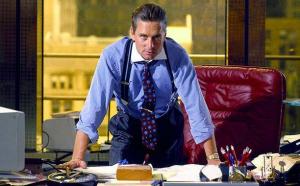By Marian Moszoro
Contemporary history unveils a sophistication of financial markets and instruments—in an interplay of asymmetry of information, principal-agent disconnect, and externalities—to the extent of making them vague and obscure to common understanding. For many years, I have collected classic business and finance movies with the idea of (some day...) launching a course where I could use them as the canvas for class discussion.
Below, I am enclosing an excerpt from an elective course called “Finance in Motion” with the movie selection and related readings. I hope it will be helpful!
Session #1: Valuation Methods; Hostile Acquisitions
Movie: “Wall Street” (1987)
[Includes authentic Boesky’s speech at Berkeley’s 1986 Commencement: “Greed is Good”]
Reading: Lo, Andrew (2015): “The Gordon Gekko Effect: The Role of Culture in the Financial Industry”; Drucker, Peter F. (1954, 1986): The Practice of Management, Harper & Row, New York; Chapter 5: “What is a business?”
Session #2: Leveraged Buyouts and Private Equity
Movie: "Barbarians at the Gate" (1993)
[Depicts KKR’s battle and acquisition of RJR Nabisco in 1988]
Reading: Ross, S., R. Westerfield, and J. Jaffe (2003) Corporate Finance, McGraw-Hill, 6th edition; Appendix 17A (on leveraged buyouts) & chapter 20.4 (on junk bonds)
Session #3: Corporate Social Responsibility versus Shareholder Value Maximization
Movie: “Other People’s Money” (1991)
[Based on the 1989 play of the same name by Jerry Sterner]
Reading: Davis I. (2005) What is the Business of Business? McKinsey Quarterly 3
Session #4: Price and Value (1)—Efficient-Market Hypothesis
Movie: “The Boiler Room” (2000)
[Based on interviews with brokers; later depicted in “The Wolf of Wall Street”]
Reading: Fama, Eugene F. “Two pillars of asset pricing.” American Economic Review 104.6 (2014): 1467–1485; Shiller, Robert J. “Speculative asset prices.” American Economic Review104.6 (2014): 1486–1517.
Session #5: Price and Value (2)—Misinformation & Creative Accounting
Movie: “Enron: The Smartest Guys in the Room” (2005)
[Documentary film on Enron’s collapse in 2001]
Reading: Fuller, Joseph (2002) “The Accounting Transparency Gap” Harvard Management Update, May; Ehrhardt, Michael C. and Brigham, Eugene F. (2011) Financial Management: Theory and Practice, South-Western, 13th edition: pp. 735–736 (on synthetic leases)
Session #6: The Financial Crisis (1)—The Causes
Movie: “Inside Job” (2010)
[Documentary film on the financial crisis 2007-2009; transcript available at: http://www.sonyclassics.com/awards-information/insidejob_screenplay.pdf]
Reading: Rajan, Raghuram G. (2006) “Has finance made the world riskier?” European Financial Management 12.4: pp. 499–533. [Paper first delivered at the annual Jackson Hole Symposium in 2005.]
Session #7: The Financial Crisis (2)—Tail Risks and Value at Risk (VaR)
Movie: “Margin Call” (2011)
[Although the film does not depict any real Wall Street firm, the plot has similarities to some events during the 2008 financial crisis: Goldman Sachs similarly moved early to hedge and reduce its position in mortgage-backed securities, at the urging of two employees; and the firms Lehman Brothers and Bear Stearns found themselves similarly and catastrophically over-leveraged in mortgage-backed securities]
Reading: Taleb, Nassim N. (2007) The Black Swan: The Impact of the Highly Improbable: Chapter 4; Benninga, Simon (2008) Financial Modeling, MIT, 3rd edition: Chapter 15 (“Value at Risk”)
Session #8: The Financial Crisis (3)—The Government’s Reaction
Movie: “Too Big to Fail: 7 Days After Lehman” (2011)
[Quasi-documentary film that chronicles the 2008 financial meltdown, focusing on the Fed’s actions to save the banking system]
Reading: Krishnamurthy, Arvind and Foster, Taft (2014) “Quantitative Easing in the Great Recession,” Kellogg School of Management, Northwestern University, KEL782.
PS.: I haven't seen "The Big Short" yet. By all accounts, it seems to be technically very accurate and worth watching.

